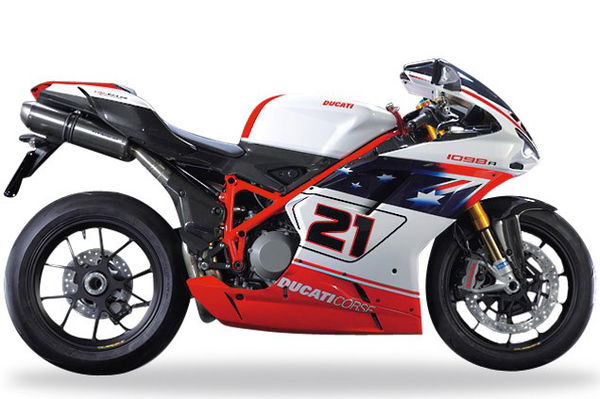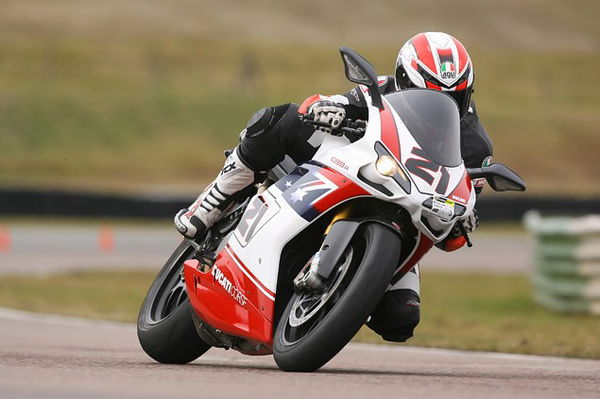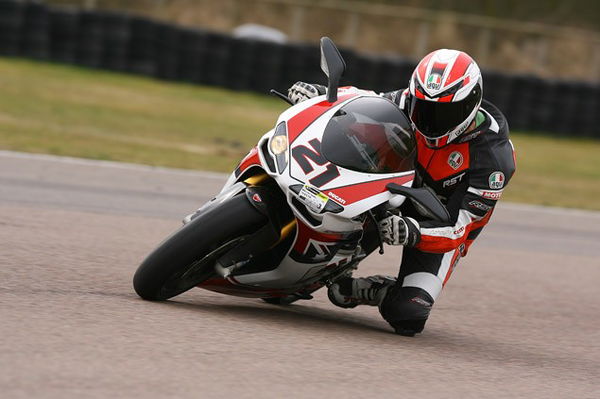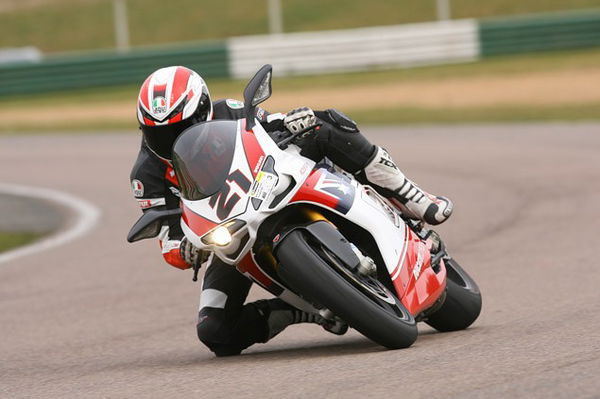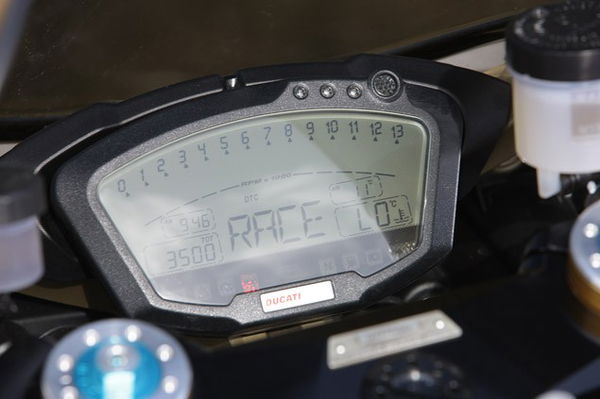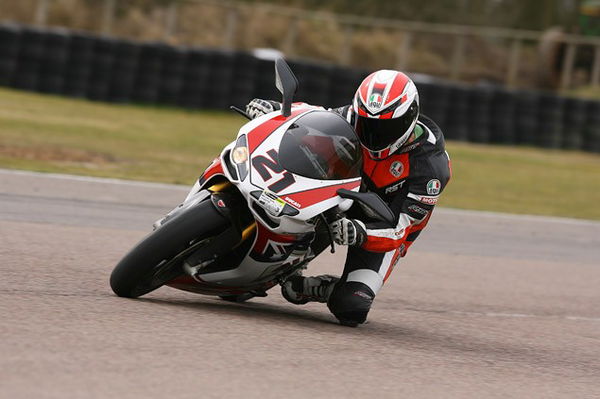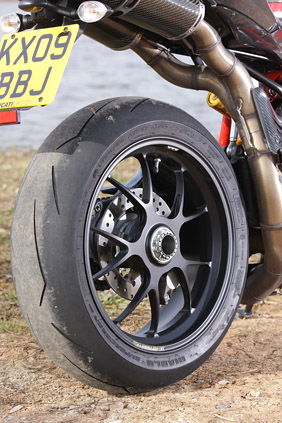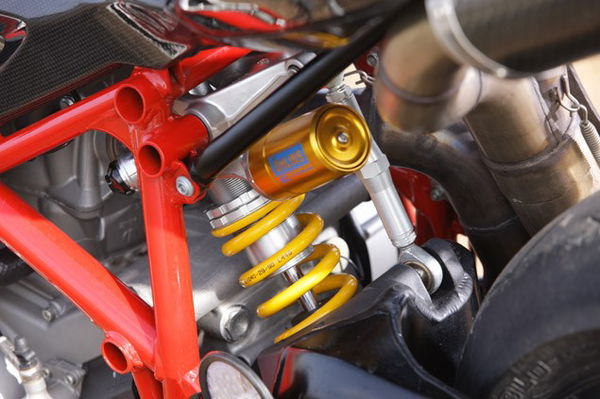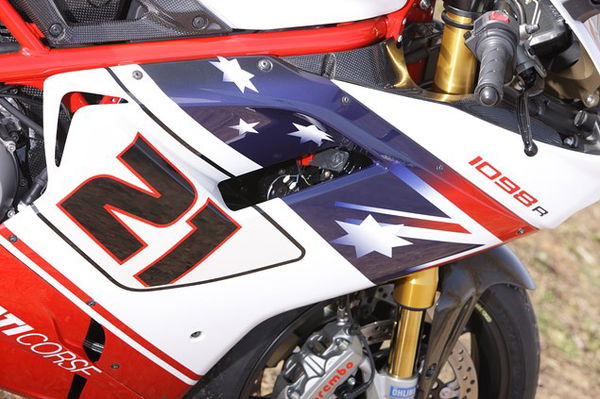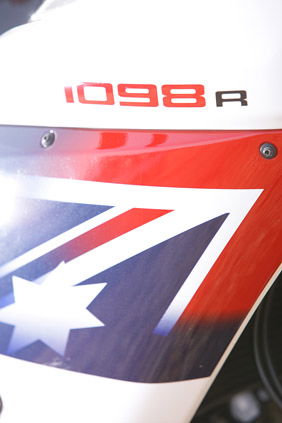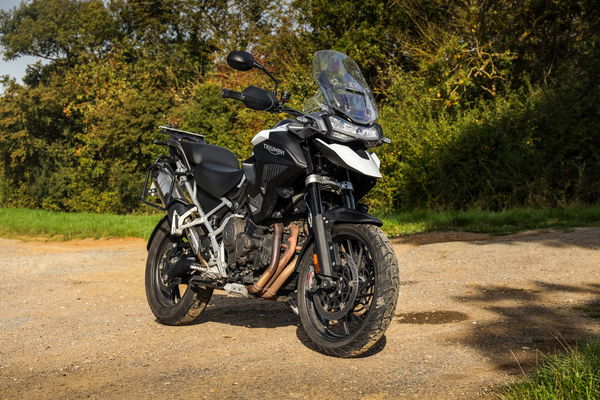Ducati 1098 Bayliss Mallory Park track test
Angry, stiff, unforgiving and verging on the unmanageable in inexperienced hands. BUT with a super-strong engine, amazing brakes and a soundtrack to savour. Hard work
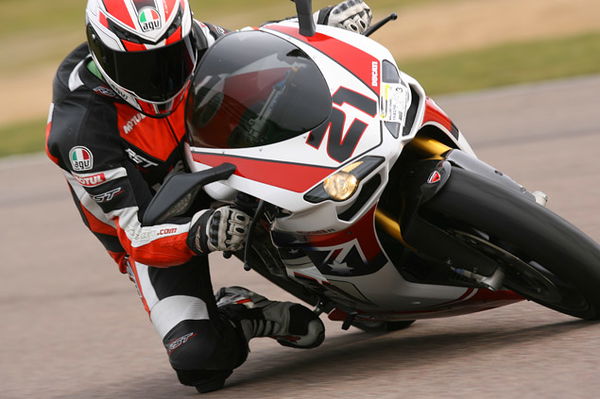

Engine
Nuts is the first adjective that springs to mind when I recall what the Ducati 1098 Bayliss engine is like. It produces a barely controllable explosion of power. Everywhere. Subtlety is not its ace card.
And while it may not trump the BMW in terms of outright power it trounces every other bike here in the torque tables. 97.75ft/lbs of tyre-shredding stomp. To put it another way, the Ducati motor churns out more torque than all the others even from a lowly 6000rpm. Torque starts to tail off at nine but this wide spread of useable twisting force gives the Ducati the ability to carry higher gears everywhere, usually with the front headlight pointing skywards.
The steepness of both the power and torque graphs also indicate the severity with which it delivers low down – from 3500 to 4000rpm. At Mallory this is where the revs find themselves as you flick left/right through Edwinas and the Bus Stop making it very hard to handle when you want to squeeze on the gas gradually and progressively.
And then there’s the noise. From the clatter of clutch to the painfully loud induction noise and booming tailpipes it’s a fabulous bit of professional dramatics. Few neighbours would agree though.
Mallory Park Track Data
The Ducati posted the third fastest time of the four bikes around Mallory whether you study the actual or the theoretical times. But of the four it felt like it needed the most setting up to deal with everything Mallory and Whitham were hurling at it. I’m a self-confessed Ducati nut but really couldn’t get my head round how to ride this unruly beast. A combination of ferocious power delivery, lazy steering and a weird riding position spoiled my planned Ducati party. Whit agreed, but made a much better job of taming it than I did.
Study the data and sector five is definitely the Ducati’s strong point where it trounces allcomers. This is the long, lefthand downhill drop through Devil’s Elbow where you ask everything of the lefthand side of your rear tyre as you build speed onto the start finish straight. Hooking third early out of the Bus Stop and riding the tractor-like wave of torque all the way through the corner was the safest (and fastest) way to tackle this section on the Duke.
But look at the mid-Gerards speed trap figures and it substantiates what everyone was saying about its inability to hold a line through a fast corner. A massive 4mph slower than the BMW. On a race track like Mallory where Gerards makes up nearly a third of a lap, that is a night and day difference.
Whitham’s Take
“Of the four bikes the Duke is the one that took the most getting used to. For a start the riding position is different. You sit ‘in’ this bike and have to stretch to the bars. It’s not uncomfortable, just different.
“The main feature of this bike is the motor, loads of power, loads of torque, and loads of lovely noise. To get it round the track fast you have to use the motor’s attributes to your advantage and almost forget everything else.
“It took real effort to get the Bayliss rep to hold line on the faster corners, this felt like a geometry issue to me, not suspension. But it flicked direction well and was the best of the bunch on the brakes, both for stability and performance, (mainly due to the magnificent slipper clutch I reckon). The motor also had a habit of chiming in a bit too strongly when you cracked the throttle open mid-corner. Trying to carry loads of corner speed and get the bike driving early while still on full lean just didn’t seem to work for me. So I ended up squaring most of the turns off, braking dead late, getting it stopped, turning in, staying off the gas a little longer mid-corner and then sitting it up onto the wider part of the tyre and letting that awesome motor do it’s job on the way out. This seemed to work as far as lap times went, but felt awkward. (looked good though, Ed)
“The Ducati would probably have felt better around a smoother, more flowing track, but here it felt like you had to work really hard to get the best from it. This amazing engine is an engineering masterpiece, no question, but lack of confidence in certain aspects of the chassis’ performance stopped me enjoying it as much as I should have.
“If you like doing wheelies though, it’s the bike for you. Mental.”
Ducati Data
Fastest lap 57.92
Theoretical lap (based on best section times) 57.20
Section times 3.74, 7.78, 10.83, 13.86, 15.16, 6.53
Top speed 139.43 mph
Slowest speed 18.3 mph
Speed at mid and exit of Gerards mid=81.1 mph exit = 98.19 mph
Braking force 1.02 g section 4 hairpin
Maximum lean angle 47.22 degrees mid Gerards
Good points
- The best V-twin ever made. Period
- Stunning engine, brakes and handling
Bad points
- Shockingly bad in traffic
- It makes you ride like Freddy Krueger
Rating: 3/5
2010 Ducati 1098 Bayliss Specifications
Price £26,000
Top speed 186mph Engine 1198.4cc, 8-valve, liquid-cooled V-twin
Bore x stroke 106mm x 67.9mm Compression ratio 12.8:1
Power 186bhp @ 9,750rpm Torque 99.1 lb/ft @ 7,750rpm
Front suspension 43mm Öhlins inverted forks Adjustment Compression, preload and rebound
Rear suspension Öhlins Monoshock Adjustment Compression, preload, rebound and ride height
Front brakes 2 x 4-piston Brembos, 330mm discs Rear brake Twin-piston caliper, 245mm disc
Dry weight 165kg (364lbs) Seat height 820mm Fuel capacity 15.5-litres
Colour options Red, Bayliss
